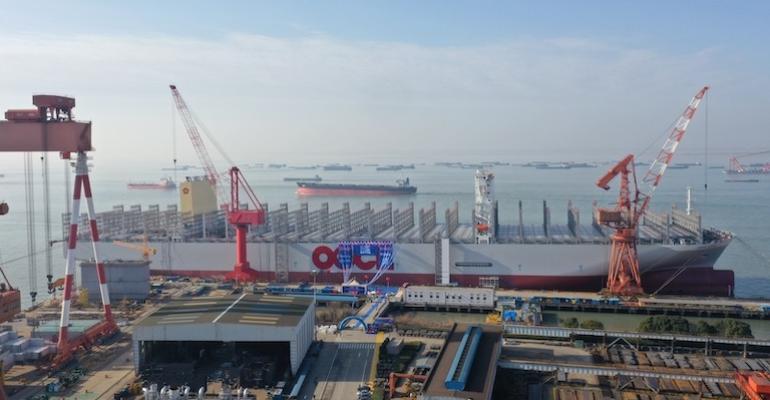According to analysis by ocean and air freight data specialist, Xeneta, no fewer than 40 ships joined the fleet over the month. In its most recent market report, the Oslo-based firm said that a total of 990,000 teu of capacity was delivered over the first half, with a similar volume expected between now and the end of the year.
The firm, which uses real-time, crowd-sourced data from leading shippers on the main trade lanes to compile its figures, reported that long-term freight rates have crashed, sinking to a two-year low in July. Its XSI® Shipping Index fell a further 9.5% from the June figure. Long-term valid contract rates have now sunk by 57.8% since the same period in 2022.
Analyst Emily Stausbøll said that market indications show little sign of respite for carriers. Even though ‘peak season’ is just around the corner, overcapacity is ‘inevitable’ even if cargo volumes do increase, she said.
“On all but three of the XSI sub-indices, the average of all valid long-term rates have dropped by more than 50% compared to a year ago,” Stausbøll revealed. “The average shipper on the main trades should be paying less than half the rates they were a year ago on the long-term market. Despite an increase in volumes from previous months, global container demand remains down year-on-year.”
Listen to a podcast on the outlook for container shipping
All major trade lanes are affected, but the Asia Europe route is worst hit. The XSI for Far East exports fell by a 2.7% in July, a drop of almost 70% since July 2022 and the lowest point since April 2021.
Meanwhile, commenting on the International Longshore and Warehouse Union’s July strike which disrupted imports through the Canadian ports of Prince Rupert and Vancouver and hit the US market, Stausbøll said: “Low import volumes and space at some ports allowed shippers and carriers to mitigate delays and find alternatives when the Canadian ports were temporarily closed, but this situation is yet another thorn in the side for the industry at a crucial time leading up to peak season.”
Copyright © 2024. All rights reserved. Seatrade, a trading name of Informa Markets (UK) Limited.
Add Seatrade Maritime News to your Google News feed.  |

